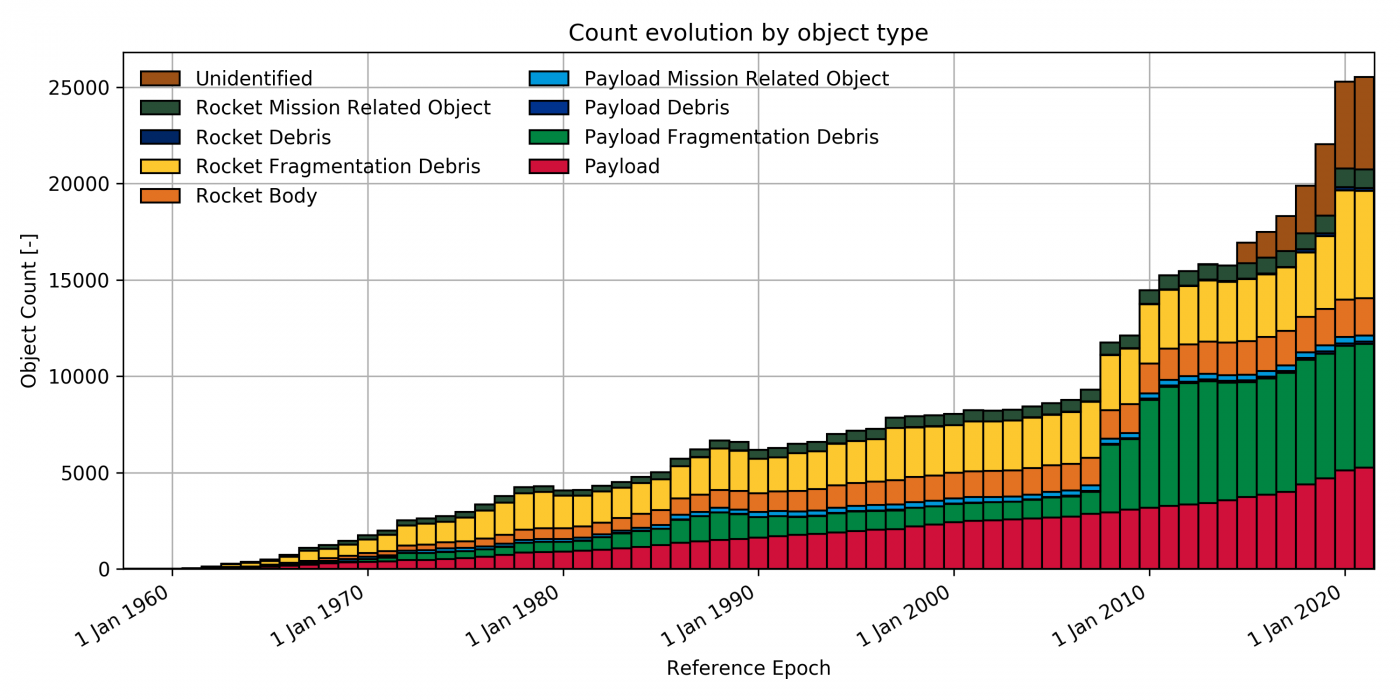By Rami Ibrahim
March 31, 2020
Introduction and History
Orbital debris is any human-made object in orbit that does not serve a useful purpose, such as non-functional satellites, deserted rocket stages to place satellites in orbit, objects released during satellite deployment, fragments created by fuel tank explosions or intentional destruction, and fragments from the space objects collision. Space debris is recognized as a major risk to space missions, fast enough to destroy or damage a spacecraft or a satellite, danger to the International Space Station (ISS), and astronauts.
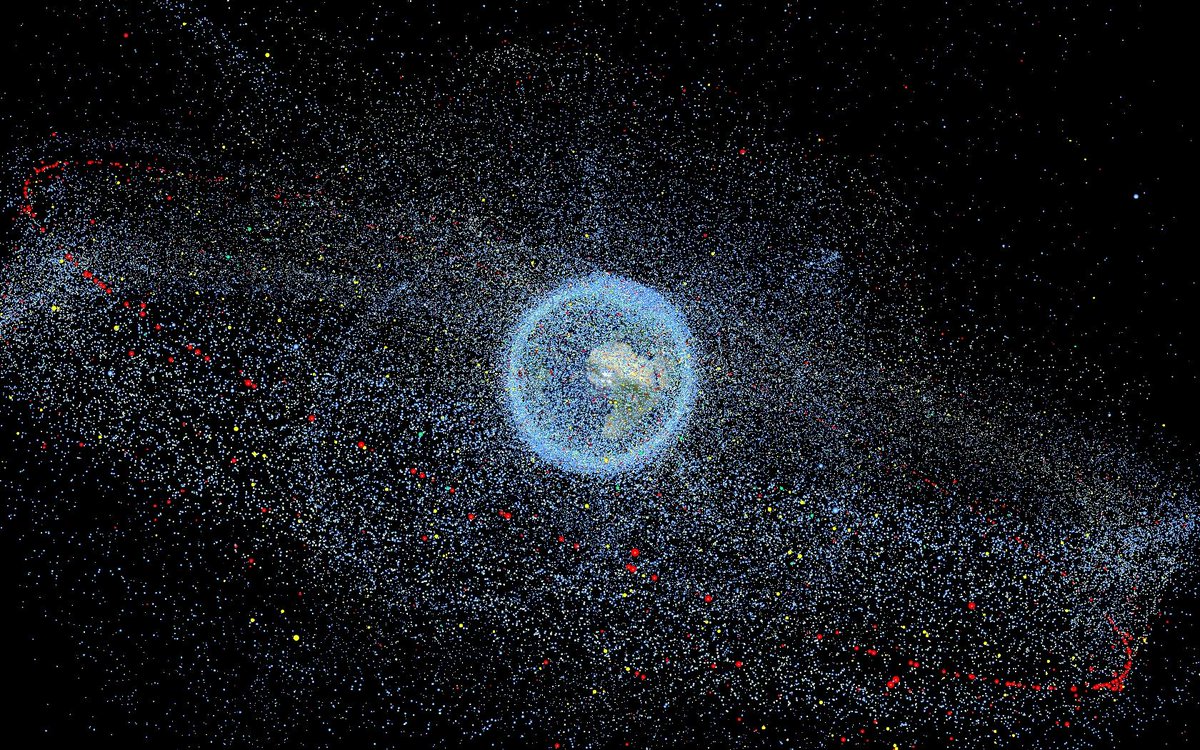
Ever since the start of the space age in October 1957, there has been more space debris in orbit than functional satellites. Space debris constitutes a problem for the near-Earth environment on a global scale, to which many spacefaring nations have contributed and for which only a globally supported solution can be the response. In the mid-1970s, the International Astronautical Federation (IAC) had organised multiple conferences to deliver the awareness about the problem of space debris based on initial research activities have been taken in the United States (USA) in the early 1960s. Also, in 1982, the first dedicated conference was conducted by NASA followed by the first workshop on the re-entry in 1983 organised by European Space Agency (ESA) in response to the re-entries of Skylab and Cosmos-1402.
Experts on space debris have been gathered multiple tests, from re-entries to on-orbital crash and high-speed impact at the agency and national levels in most of the 1970s and 1980s. However, global initiatives started which began on the initiative of NASA. Multiple meetings have been conducted to exchange data, and these meetings led to the creation of the Inter-Agency Space Debris Coordination Committee in 1993. Space debris has also been a frequent agenda item for the Scientific & Technical Subcommittee of the United Nations’ Committee on the Peaceful Uses of Outer Space (UNCOPUOS) since 1994.
Evolution of Space Environment (By Object Orbit) from 1960 till 2020
The definitions in the table below describe each orbital regime of the next graph. And each orbit will be identified based on inclination (i), semi-major axis (a), eccentricity (e), perigee height (hp), and apogee height (ha).
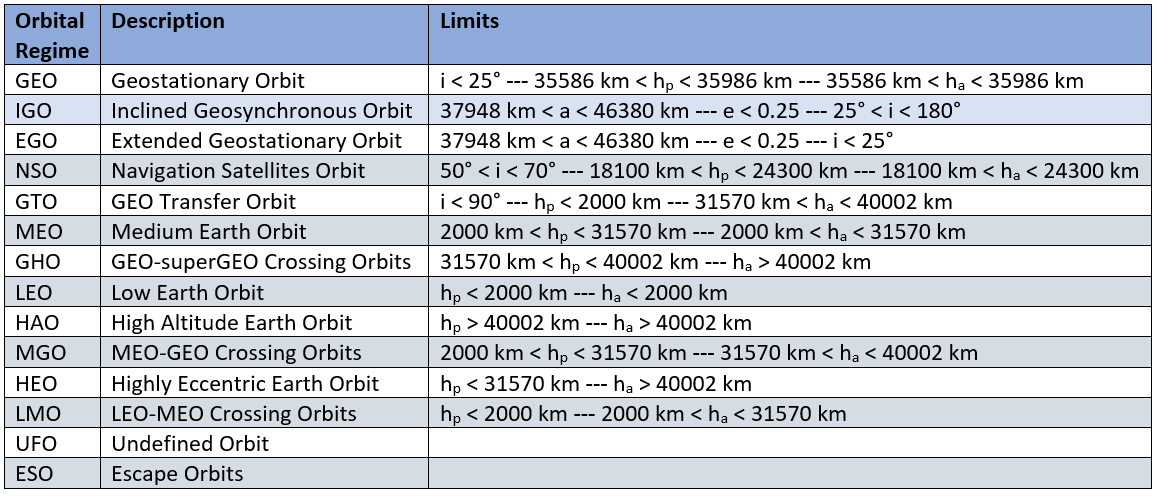
Based on the above orbital regimes; the graph below shows the count evolution by object orbit from 1960 till 2020.
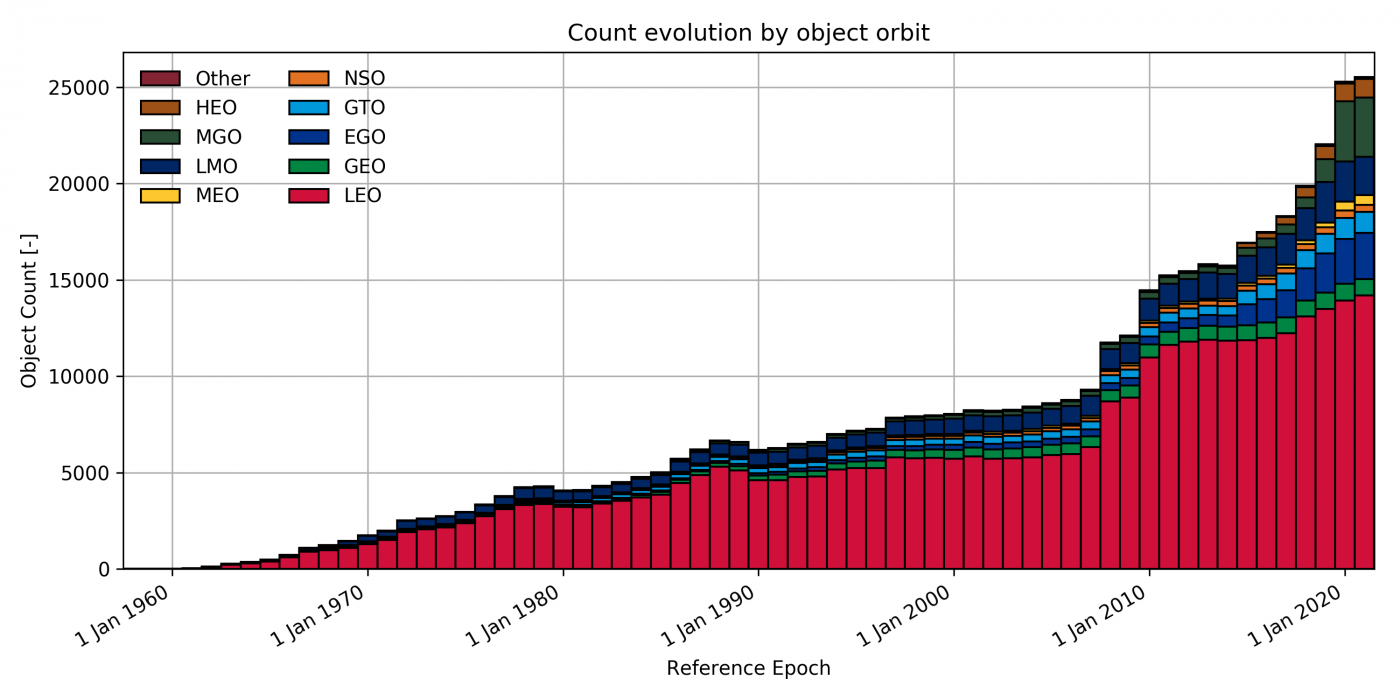
International Cooperation
The United Nations (UN) Committee on the Peaceful Uses of Outer Space (COPUOS) pays attention to the space debris problem. The 13-members agencies are cooperating under the Inter-Agency Space Debris Coordination Committee (IADC) which also contributes to the UN space debris activities via the Scientific and Technical Subcommittee (STSC) of the COPUOS.

The members are CNES (Centre National d’Etudes Spatiales), UK Space Agency, DLR (German Aerospace Centre), CSA (Canadian Space Centre), ASI (Agnezia Spaziale Italiana), CNSA (China National Space Administration), ESA (European Space Agency), ISRO (Indian Space Research Organisation), NASA (National Aeronautics and Space Administration), KARI (Korea Aerospace Research Institute), JAXA (Japan Aerospace Exploration Centre), ROSCOSMOS (State Space Corporation ‘ROSCOSMOS’), SSAU (State Space Agency Ukraine).
The IADC is an international forum of national and international Space Agencies for coordination of activities related to space debris risks and mitigation as arranging an annual meeting and conferences. The purposes of the Inter-Agency Space Debris Coordination Committee (IADC) cooperation are exchanging data between members, addressing issues, providing technical recommendations, sharing research activities, protection and mitigation options. The IADC consists of four working groups covering measurements, environment & database, protection, and mitigation.
The annual meeting of the year, 2019 was hosted by the Agenzia Spaziale Italiana (ASI) in Roma, Italy, and the previous meeting of the year, 2018 was hosted by JAXA in Tsukuba, Japan. The next annual meeting supposed to be hosted by the French Space Agency (CNES) in Toulouse, France (6-10 April 2020), but due to the current outbreak of coronavirus (COVID-19), IADC administration has decided to cancel the IADC 2020 conference.
There is an International Conference on Impact and Remediation of Space Debris that should be hosted in Copenhagen, Denmark (ICIRSD 2020) on July 15-16, 2020.
Evolution of Space Environment (by Object Type) from 1960 till 2020
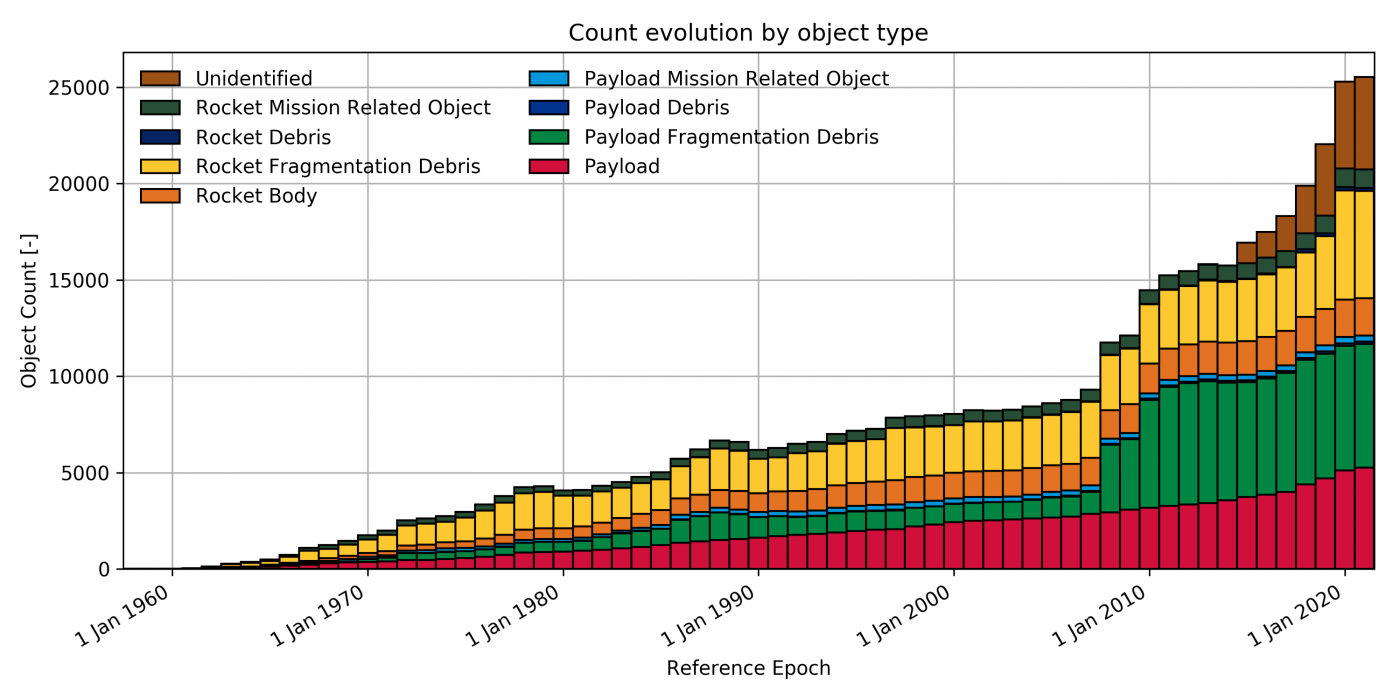
Therefore, the above object types are defined as follows: Payloads; any object has designed to execute a specific mission in space such as operational or functional satellites, excluding the launch. Payload fragmentation debris; objects unintentionally released from payloads or fragmented as debris and this type includes colliding or payload exploding. Payload debris; space objects unintentionally released from payloads or fragmented for which the formation is not clear but their physical properties related to a source. Payload mission-related object; objects have released which already served functional payloads such as astronaut tools or covers of instruments. Rocket body; space object has designed to execute launches includes several orbital stages of launch vehicles, but payloads are not included. Rocket fragmentation debris; objects unintentionally released from a rocket body or fragmented as space debris for which could be tracked and this type includes objects formed after a launch vehicle explosion. Rocket debris; also objects unintentionally released from a rocket body or fragmented as space debris for which the formation is unclear but their physical and orbital properties related to a source. Rocket mission-related object; space objects intentionally released as space debris which served a purpose for the function of a rocket body such as engines.
Conclusion
Space debris by the numbers; Number of debris objects regularly tracked by Space Surveillance Networks is about 25510, number of rocket launches since the start of the space age in 1957 is about 5930 excluding failures, number of satellites of these rocket launches have placed into orbit is about 9660, number of these satellites where still in space is about 5330, number of these satellites still functioning is about 2600, the estimated number of collisions and explosions is more than 540, the total mass of all space objects in orbit is more than 8800 tonnes. Most of the mass congestion in space is comes from payloads and rocket bodies. In general, as per ESA, the performance and execution of debris mitigation are still poor regarding spacecraft in LEO and required for a global response and more cooperation. The NewSpace of LEO commercial constellations might increase the risk of collision and impact space traffic management. On the other hand, there are many initiatives and solutions underway, with support from the governments and private sectors to design and build space-based for debris mitigation such as small spacecraft to remove non-functional and debris objects or support satellite In-Orbit such as re-fulling to extend their life-span. Also, ground-based solutions where there are multiple companies are enhancing their ground laser technology and capability; by hitting objects to change their altitudes and orbitals to manage space traffic and avoid a collision.

